

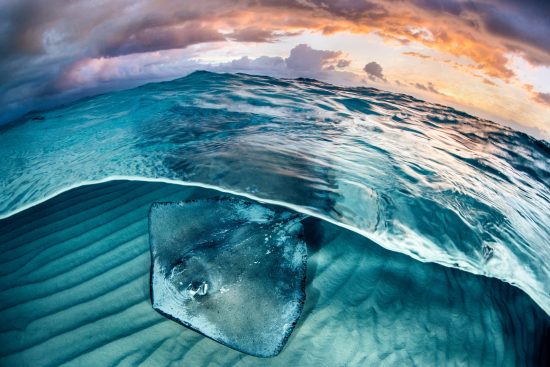
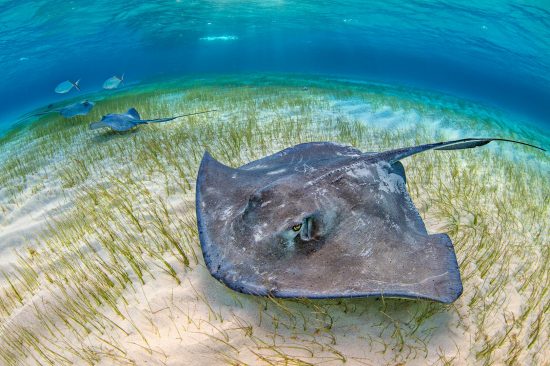
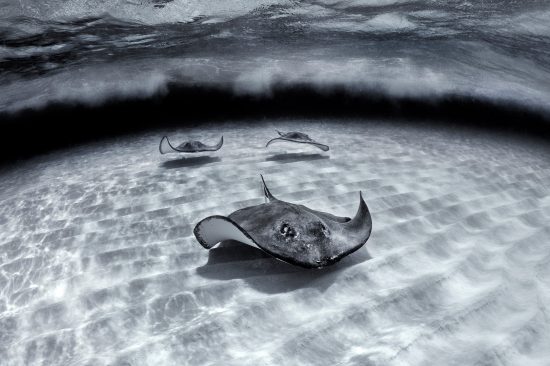
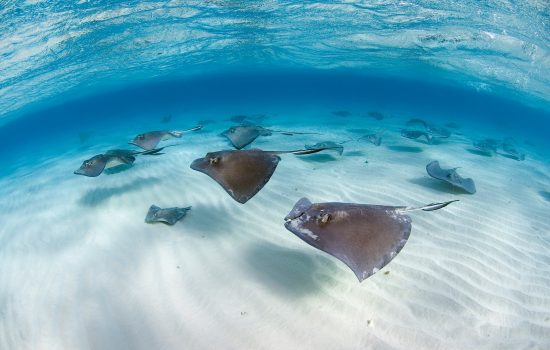
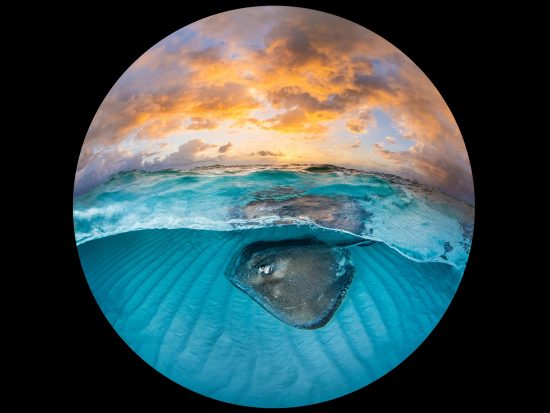
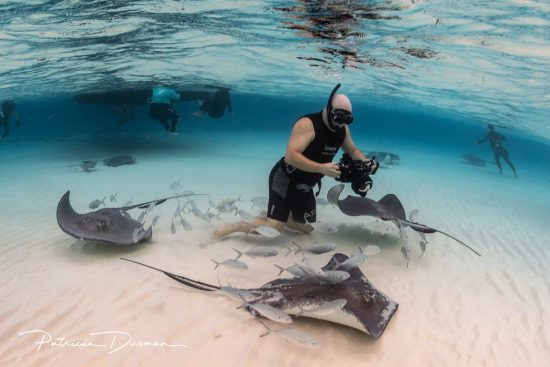
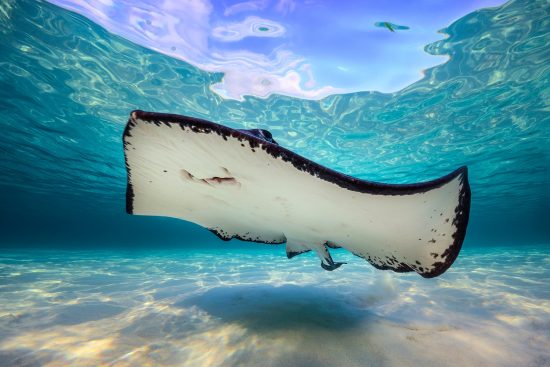
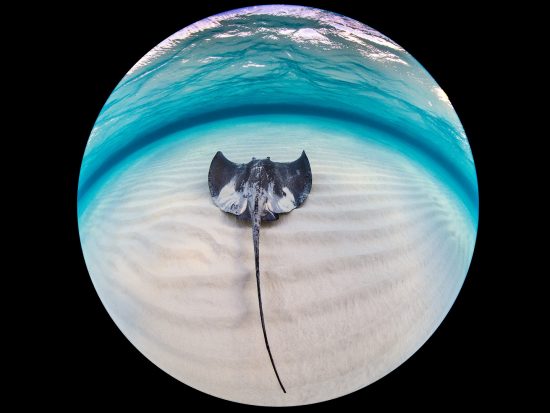
Crystal clear turquoise water crammed with circling stingrays - there can be few more iconic images of the Cayman Islands. The chance for snorkelers to meet and interact with Grand Cayman’s stingrays must be its most famous attraction for visitors, and much loved by underwater photographers. I like to take my photo groups there at dawn, when we have fascinating changing light and, just as important, tend to have the place to ourselves. Also, we choose not to feed them (most boats feed them squid) if we are there on our own because they behave much more naturally, and I think it gives better photos.
To give you a bit of history, stingray experiences got started in Cayman as a result of fishermen anchoring in shallow sandy areas inside the reef to clean their catch before returning to port. Stingrays already lived in these areas and they soon started snacking on this regular supply of free food. Captain Marvin Ebanks was one of the first to take visitors to see them and first remembers the rays from days accompanying his father on fishing trips. “One day, I happened to notice that the stingrays seemed to be waiting for us. Sure enough, as soon as we threw the scraps overboard, they headed straight for the meal”.
By 1986, dive instructors started to notice the abundance of curious stingrays and plucked up the courage to try hand-feeding them underwater. Two of the first were Jay Ireland and Pat Kenney, who were later featured in Jack McKenney’s defining film Stingrayman. Pat Kenny describes his apprehension when attempting to feed the rays for the first time, “I was more than a little wary, however, of feeding the rays. After all, don’t they have teeth? Won’t they attack? Or sting?” He soon learned he had little to worry about. “It was an experience that would change Jay’s life and mine utterly. It was like making contact with E.T. No, they didn’t have teeth, attack or sting.”
Stingray feeding in the Cayman Islands hit the big time in 1987 when an article in Skin Diver Magazine, written by Geri Murphy, rated it the “Best 12 Foot Dive in the World” and coined the name “Stingray City”. The word spread and visitors flocked to experience it for themselves. These days, the dive site isn’t popular, and most people go to the waist deep Stingray Sandbar, which I definitely prefer for photos. Gear-wise, I usually wear some protection from the sun, like a rash guard, although in the cooler January temperatures this year, I wore Ultra Skin shorts and a Gold Skin 2mm vest. I used an X-Vision mask and Dual snorkel, but you are not allowed any footwear there, including fins. I have to say that when I shoot split level images, I often leave my mask and snorkel on the boat!
The stingrays at the Sandbar are a species known as the southern stingray (Dasyatis americana). Stingrays are so-called because of the barbed spine they have on their tails with an associated venom gland. They use this spine to defend themselves from sharks, which are their main predators. Their defences do not always work: one Great Hammerhead Shark was found with 96 indigestible Southern Stingray barbs in its stomach! We have seen hammerheads and a young tiger shark hanging around the Sandbar when we’ve been there in the very early morning.
Stingrays have a wide, flat body, which is an adaptation for their life on the seabed where they live digging for food, such as molluscs and crustaceans, in the sand. Their mouths are on their undersides, ideally positioned so that they can easily munch any morsels they find. Stingrays are also masters of disguise and spend much of their time buried in the sand with only their eyes poking out. If you search carefully on the Sandbar, you can see many imprints of where rays have been lying, left in the sand rather like a snow angel. Stingrays have openings behind their eyes called spiracles to enable them to breathe when they are lying with their mouths and gills buried in the sand.
 Alex
Alex 7th April 2023
7th April 2023